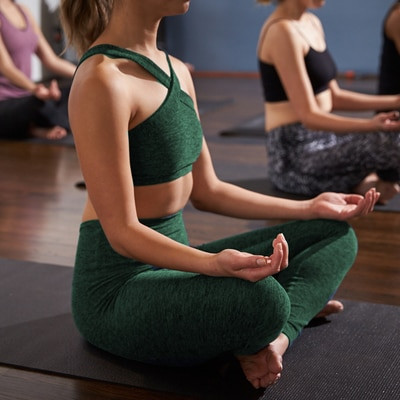
Mind-Body Breathing
Posted by Spinning® on Aug 26th 2020
UPDATED: April 19, 2022
April is Stress Awareness Month, and we wish to bring you greater ease. Along those lines, how would you like to exercise more enjoyably, with more efficiency, while experiencing less strain? Better yet, how would you like to pass this knowledge on to your students? Implementing mind-body breathing will be your first step towards success.
There are two types of breathing: chest and diaphragmatic. Diaphragmatic breathing is the most efficient means of respiration. The diaphragm is a flat, parachute-shaped muscle at the bottom of the lungs. As you inhale, this muscle contracts, drawing air into the lungs. This diaphragmatic action is important, as it pulls air into the lower lobes of the lungs first. The blood supply to the lower lobes is gravity dependent, so that while we are upright there is far more blood available for oxygen exchange in the lower parts of the lungs. It is for this reason that diaphragmatic breathing, which draws air into the lower regions, is such an essential component of optimal exercise breathing.
Most people breathe mainly in the chest by expanding and lifting the rib cage via the inter- costal muscles. This action is more difficult than diaphragmatic breathing and requires more work and a higher heart rate, to perform. Chest breathing fills the middle and upper portions of the lungs but doesn't efficiently engage the blood-rich lower lobes.
In order to perform this lower-lobe, breathing, the abdominals should not be 'pulled-in' or kept tight. During inhalation, the lower rib cage expands and the abdomen feels protruded. When exhaling, the lungs recoil and the abdominals retract naturally. When coaching your students, refrain from using the cues "pull the abs in" or "keep the abs tight," which will hinder optimal performance breathing.
In order to change from inefficient mouth breathing to efficient nose breathing, you need to be willing to take a couple of steps backward and be patient while getting accustomed to breathing through your nose. Realize that your intensity will decrease dramatically as you make this adjustment. As you begin nose breathing, you will feel like you aren't getting enough air into your lungs. With practice, you will realize that you are replacing quantity with quality. Give yourself a few months of nose practice and you will begin to experience a drop in heart rate without sacrificing exercise intensity along with a new sense of calmness and focus.
